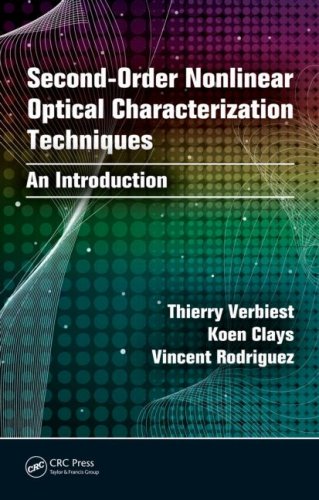

Most ebook files are in PDF format, so you can easily read them using various software such as Foxit Reader or directly on the Google Chrome browser.
Some ebook files are released by publishers in other formats such as .awz, .mobi, .epub, .fb2, etc. You may need to install specific software to read these formats on mobile/PC, such as Calibre.
Please read the tutorial at this link: https://ebookbell.com/faq
We offer FREE conversion to the popular formats you request; however, this may take some time. Therefore, right after payment, please email us, and we will try to provide the service as quickly as possible.
For some exceptional file formats or broken links (if any), please refrain from opening any disputes. Instead, email us first, and we will try to assist within a maximum of 6 hours.
EbookBell Team

4.0
36 reviewsAlthough chemists, biochemists, biologists, and material scientists are often interested in using nonlinear optical techniques for characterizing their samples, they seldom have the necessary background to exploit these methods. Designed for nonspecialists, Second-Order Nonlinear Optical Characterization Techniques: An Introduction focuses on the potential of second-order nonlinear optics as a powerful characterization tool. Avoiding extensive mathematical details, this multidisciplinary book does not require a background in advanced mathematics or physics.
After introducing linear optics from the perspective of polarizability and linear susceptibility, the authors cover incoherent second-harmonic generation. They then deal with the study of surfaces and interfaces, exploiting the intrinsic surface sensitivity of second-harmonic generation and sum-frequency generation. The final chapter discusses second-order imaging techniques, including confocal microscopy and two-photon excited fluorescence microscopy.
Accessible to a wide range of scientists, this concise book stresses the reliability of nonlinear optical processes for probing surfaces and interfaces. Drawing on the insight offered in the text, scientists from many disciplines can now clearly understand and use second-order nonlinear optical methods.